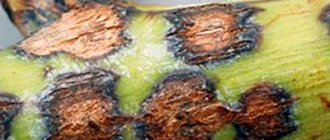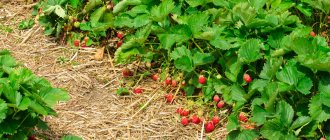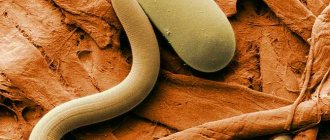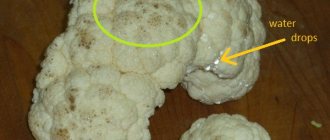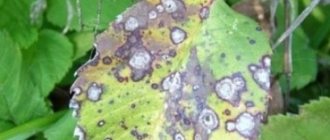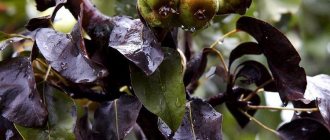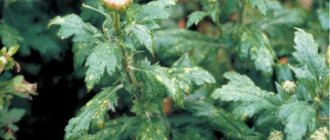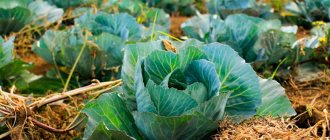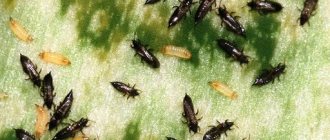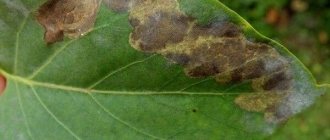Reader Questions
Why do dracaena leaves curl into a tube?
Curling of dracaena leaves may indicate that the plant is freezing. A cold window sill, a slightly open window, an air temperature below 15C - these factors negatively affect the condition of the flower. First aid for leaf curling is to move the flower into a warm place and frequently spray it with lukewarm water. Why do the tips of dracaena leaves dry out, what should I do? Often the reason lies in the climatic conditions of detention. The plant of the humid tropics does not tolerate dry air. That is why it is recommended to spray the plant more often the warmer the room is. It is unacceptable to place a pot with a plant close to the radiator. An aquarium, a tray with moss or an air humidifier will save the situation. The tips of the leaves need to be trimmed; the dead part will not be restored.
Why do dracaena leaves turn yellow and fall off? When a flower’s leaves not only turn yellow, but also fall off, the tugor is lost and it cannot be saved. Most likely, the root system is completely destroyed by dracaena disease. To prevent the death of the plant, the disease must be eliminated, guided by the first signs. Fertilizing with phosphorus-potassium fertilizers makes the root system of the flower resistant to diseases.
Why does dracaena shed its leaves from the base? The loss of lower leaves is normal for dracaenas, especially in winter, when the heating is on and there is not enough light.
Is it possible to plant dracaena leaves? Unfortunately, in this case the flower will not be accepted, as it is propagated by cuttings, tops or seeds.
Why do dracaena leaves turn black? Dracaena leaves can turn black for two reasons:
- The plant dies from excess moisture in the pot. If water constantly stagnates in the pot, the roots do not receive enough oxygen. Because of this, they begin to deteriorate and rot. As a result of this, the plant does not receive the required amount of nutrients and minerals and the plant begins to die: the dracaena leaves turn black, the trunk becomes soft, and the dracaena begins to shed leaves in large quantities.
- The second reason why dracaena leaves turn black is low temperature and cold drafts. If a flower is left for a long time in a room with a temperature below 18 degrees, the leaves of the flower begin to wither and turn black, and then fall off.
Dracaena's leaves and soft trunk are falling off - what to do? This suggests that the dracaena roots have stopped working and supplying food to the crown. This is a very dangerous situation that threatens the death of the plant. You need to act immediately! Almost always, softening of the trunk occurs due to excessive waterlogging of the soil. This can happen if the soil is too dense, and the drainage in the pot is poor. To save the plant at an early stage, it is necessary to transplant it into another pot with a new substrate. In extreme cases, the top of the dracaena is cut off with a cutting, the roots are grown and a new plant is replanted.
Why do dracaena leaves turn yellow and become covered with brown spots? If the leaves are covered with brown spots, then the reason may be a lack of watering, a draft or low air temperature. You need to: normalize the air temperature in the room; water regularly, but not too much; do not allow water to accumulate in the flowerpot.
Replanting and pruning - to make the plant comfortable
After purchasing the dracaena, we give it time to adapt - about 21 days, then transplant it into another pot. We carry out the transshipment carefully together with a lump of earth, in order to avoid damage to the root system. We fill the free space with pre-purchased soil or prepared soil ourselves. If you prepare the mixture yourself, take the following components:
- turf land;
- leaf soil;
- peat;
- humus;
- coarse sand.
Mix all components in equal proportions. For disinfection, add wood ash. We put drainage at the bottom of the pot. When choosing a flowerpot, we evaluate the size of the plant. If its height is 40 cm, then we take a container with a diameter of 16 cm.
We replant a young palm tree regularly once a year; an old plant does not need frequent replanting, so it is better to replant it once every 2-3 years. The best time for replanting is considered to be the time when the plant comes out of dormancy: late winter-early spring. We transplant the plants into containers 2-3 cm larger than the previous one. Add the required amount of soil, water and place in a warm place. When the soil settles, add more soil if necessary.
To give the palm a beautiful shape or to prevent the spread of the disease, we perform pruning, which is best done in winter, when the plant is dormant. For pruning we use garden shears. Before the procedure, we must disinfect the instrument. After cutting, sprinkle the cut area with wood ash or crushed coal. If you cut off the top of a palm tree, new shoots will begin to grow from the sides.
If we do pruning for branching, then we prune plants that have reached a height of 30 cm. We cut the shoots 6 cm below the last leaves or leave the height necessary to form the shape of the bush. After 17-25 days, buds appear under the cut, from which side shoots subsequently grow. After pruning, we provide the plant with good lighting, watering and spraying so that new branches grow better.
Dracaena diseases
• The edges and tips of the leaves are brown and dry. Due to the low humidity in the room, the dracaena dries out, and for the same reason, a brown color may appear on the leaves.
• Dry spots. The problem comes from exposure to the sun.
• Color change. Variegated species change color and become monotonously green due to excess feeding and too dark rooms.
• Yellowness of the lower tier of leaves. If the dracaena turns yellow, you should not think that the plant is sick, this is a natural process. Dracaena leaves live no more than three years, turn yellow and then die.
• Leaves curl. Low temperatures and drafts cause the sheet to curl.
• Rotting. If dracaena sheds more than 5 leaves per day, it is susceptible to rotting. The rotting process is very short-lived, and quite often the plant cannot be saved. The only thing you can do is cut it off and try to root the crown.
• Pests. In rooms that are dry and poorly moistened, dracaena can become infected with spider mites, as well as mold, mealybugs, aphids, etc. The plant must be inspected several times a month; if pests are detected, a soap solution and ready-made formulations are used to solve the problem.
Kaplinskaya Anna Olegovna
The article was prepared specifically for MirSovet.ru – https://mirsovet.ru
| Next > |
Next articles:
- Did you know that there are over 1000 different types of anthuriums, and new varieties appear every year. Tropical plants are considered the homeland of this huge genus...”>Care for anthurium at home
- In Japan it is called “Bon-sai”, in China – “Pun-sai”, which simply means “tree in a bowl”. But, of course, it’s not at all easy to grow pr…”>Bonsai with your own hands
- Calathea belongs to the perennial plants of the arrowroot genus and is a herbaceous species. About 150 varieties of this plant are known. Note...">Indoor calathea: types, care, reproduction, diseases
Previous articles:
- Yucca is a perennial tree plant of the Agave genus. There are more than 40 varieties of this plant. Yucca is an evergreen plant…”>Yucca: care, reproduction, diseases
- Schefflera is a shrub plant of the Araliaceae genus. The Schefflera species is also represented by small-sized trees; the flora includes more than 200 different species...”>Schefflera: types, maintenance and care, reproduction, diseases
- Spathiphyllum belongs to the perennial plants of the araceae genus. The plant belongs to tropical plants and is most common in Colombia, Brazil…”>Spathiphyllum: care, types, diseases
Next page >>
Reproduction of dracaenas
This plant grows quite quickly. At some point, many flower growers are looking for a new place for their pet, for example, relocating it to office space. But what if you want your home to have tropical beauty again? Dracaena should be propagated at home.
It is almost impossible to get new seedlings from the roots; this plant does not bloom indoors. So what should we do? Many experts offer several options for propagating dracaena at home:
- Stem or apical cuttings.
- In shifts.
- Air layering.
At home, these two methods are used.
Possible problems after transplantation
Quite often, flower growers complain that dracaena leaves fall off and the soil in the pot becomes moldy after replanting. There is no need to panic right away. It is quite possible that the plant is undergoing an adaptation period. The maximum time it takes for dracaena to get used to the new soil is two weeks. If after this period the dracaena does not come to life, but continues to wither, it means that some mistakes were made during replanting.
Possible reasons include the following:
- Strong soil moisture in the pot.
- Dense and heavy soil.
- Insufficient amount of nutrients in the soil.
Solving the above problems is not as difficult as it seems.
Why can a plant get sick?
Like any other flowers, dracaenas are susceptible to diseases. Characteristic Symptoms: Brown discoloration of the white areas of the leaves (dead or yellow tips) may indicate fluoride toxicity or alkaline soil. Brown spots on the roots with an odor indicate soft rot.
Dracaena is an excellent choice for home breeding
Reddish or light brown spots surrounded by a yellow halo may indicate that the dracaena has spotting. Yellow spots on dracaena leaves, yellow or dead stripes indicate that the plant has become too cold.
Note! Damaged leaves or stunted growth may indicate an infestation of thrips, shore flies, scale flies, mealybugs or fungus gnats.
Fungal and bacterial diseases
Improper care, which leads to a weakening of the defenses, is the most common cause of damage to dracaena by fungal and bacterial diseases.
Alternaria or concentric spot
Signs of Alternaria blight are dry, round spots on the leaves and other parts of the plant. Their shade is most often light brown, and in the center you can see a white dot and concentric circles. Upon closer examination of the foci of the disease, dark or light inclusions of fungal spores are visible, which, as Alternaria spreads, provoke blackening of dry spots.
Treatment of Alternaria involves the use of fungicides. Not only “Fundazol” is suitable (dosage – 10 g per 0.5 liter of water), but also “Topaz”, “Oxychom”. You need to spray the bush at least 3 times, observing a 10-day interval.
Phyllosticosis or brown spot
A common cause of phyllostictosis is a violation of indoor humidity. Most often, adult bushes and old-time plants suffer from this type of fungal disease. Spotting in phyllostictosis is characteristic - irregular in shape, beige in color with a yellow-green border. Small black dots (pycnidia) are also noticeable.
To treat dracaena, three treatments with any available fungicide are used with an interval of 10 days. It is recommended to alternate medications to prevent the fungus from becoming accustomed to them.
Heterosporosis
The disease affects both sides of the leaf blade, in the initial stages causing the appearance of oblong yellowish spots. As heterosporosis spreads, the spots darken and acquire a brown tint, and a dark red border becomes pronounced. At an advanced stage of the disease, there is an increase in foci and the appearance of fungal spores.
The danger of heterosporosis is its rapid spread and damage to the entire plant, which dies if left untreated. The apical shoot is the first to suffer, and then the remaining parts of the dracaena, which turn yellow and dry out. At risk are specimens that grow in rooms with dry air and insufficient moisture.
Effective means of combating heterospora are fungicides “Topaz”, “Strobi”, “Maxim”, “Skor”, “Quadris”, “Falcon”. You can also treat the bush with a solution of Bordeaux mixture according to the instructions. It is advisable to carry out 3-4 sprayings to completely destroy the fungus.
Bacteriosis
Bacteriosis is a dangerous bacterial disease that cannot be treated. Most often, it affects dracaenas planted in a substrate with a high alkali content, as well as specimens suffering from a lack of fresh air and poor ventilation in the room, heat, soil depletion, constant dampness and systematic waterlogging of the soil. As a result, the bushes' immunity weakens and they become more susceptible to bacterial attacks.
Bacteriosis can be recognized by several signs:
- Wateriness at the tips of leaf blades and their darkening;
- Rotting lesions on leaves that feel damp when touched. After the stains dry, a characteristic film remains;
- Small round ulcers that form not only on the leaf mass, but also on the stem;
- The appearance of characteristic yellow stripes that separate the diseased and healthy parts of the leaf blade.
It is noteworthy that bacteriosis of dracaena can spread to neighboring plants, especially those that are in close contact. The risk of infection increases significantly in the case of spraying, when water gets on parts of the diseased and healthy flowers.
If dracaena gets sick with bacteriosis, throw it away without regret. Any delay risks infecting the entire collection, which will soon die. Be sure to disinfect the pot with boiling water or a solution of potassium permanganate before planting another indoor flower in it.
Bacteriosis
The most dangerous plant diseases include bacteriosis. This disease is incurable. There are several reasons that weaken the flower and contribute to the development of the disease:
- waterlogging of the soil and high dampness;
- lack of air;
- heat;
- soils with a high alkaline content.
There are several symptoms of this disease. Wide yellow stripes appear on the leaves, separating the healthy and affected parts. The tips of the leaves darken and become watery. They begin to rot and turn brown. When drying, a film forms on the surface. Small round sores form on the stem and petioles.
Infected dracaena is a danger to all plants indoors. Therefore, a diseased flower must be destroyed immediately.
Brief description of the pest
There are more than 300 species of scale insects in Europe. In total, 2200 species are known. Dracaena is parasitized by seaside, grape, bristly, cactus and amaryllis. They look almost the same; only a highly specialized specialist can tell them apart.
Characteristic signs of mealybug
The sizes of adults vary from 3 to 7 mm. Occasionally, larger specimens are also found, reaching a length of 9-10 mm.
The appearance of the mealybug is very peculiar:
- Individuals are covered with a white coating reminiscent of flour, which predetermined the name of the mealybug. Waxy secretions protect the parasite from moisture loss. Large clusters of insects look like a thin layer of cotton wool or wax.
- Females are wingless, the oval body is strongly flattened on the sides with many legs, covered with a waxy coating. There are thread-like antennae. The color is white, grayish, pink, and occasionally orange.
- Males are significantly smaller than females, but most species can boast of the presence of fore wings. There is a tuft of waxy filaments on the abdomen. After the third instar, males do not feed on anything, since the oral apparatus is reduced.
- The larvae are essentially a smaller version of their parents. Mouthparts are sucking type.
Aftercare for indoor plants
After planting the planting material, a period of active growth and development of dracaena begins, requiring certain knowledge from the grower. Many standard actions are performed in the usual sequence, but at the same time, they also have their own characteristics that must be paid attention to. Let's look at each of them.
Feeding and watering
Regardless of the season, moistening the soil in a pot with dracaena should be done only after it has dried to a depth of 2-3 cm or more. In the summer, this happens on average 1-2 times a week, and with the advent of cold weather and the dormant period, the number of waterings decreases to twice a month. However, these indicators are approximate, because a lot here depends on the air humidity in the room and the type of dracaena (plants with wide leaves use up accumulated moisture faster than representatives with narrow leaf blades).
Did you know? In the development of dracaenas, as in the life of people, there are three main periods: youth, maturity and old age. The plant enters the mature period only after 35 years of active development, but old age lasts even longer, because the total lifespan of some tree species can be thousands of years.
As for water for irrigation, it must be at room temperature and free of chlorine or other additives harmful to plants. In addition to regular watering, fertilizing, often combined with adding liquid to the soil, will be no less important for the tree. Typically, the fertilization period begins in the first warm months and ends in mid-November, 2-3 weeks before the dracaena goes dormant.
Both complex mineral fertilizers for flower plants (sold in gardening stores) and organic solutions of horse manure or mullein are excellent for serving as nutritional compounds. True, in the latter case, such mixtures can be used only 1-2 times per season, choosing a granular form or a liquid concentrate form (diluted in water in a ratio of 1:10). In summer, the frequency of applying mineral compositions should not be less than 1-2 times a month.
Pruning and shaping the bush
Pruning dracaena is a vital activity for it, which is performed for several main reasons:
- to maintain the compact size of indoor plants;
- to improve decorative properties (rejuvenation);
- for sanitary purposes.
Planned formative pruning is best done during the active growth of the tree, when sap is moving inside it. Sanitary pruning is sometimes performed as an emergency (often due to a broken stem) and involves its removal. In addition, it is also relevant for yellowed or wilted leaves, which only consume the plant’s energy reserves. The first pruning of the plant can be carried out when its trunk reaches 30 cm (from the ground line to the first upper leaves).
Read more about how to care for Dracaena Sander.
Any part of a leafy or bare trunk is cut off, but always under sterile conditions, using a disinfected instrument. With strong growth in width, it is possible to remove the side shoots, but with the obligatory preservation of small stumps, about 2-3 cm long. When performing any pruning option, it is extremely important that the dracaena is completely healthy, because this is the only way it will calmly tolerate such interference and continue its active life. development.
Video: pruning dracaena
Transplanting a plant
When grown at home, dracaena is often transplanted once every 2-3 years, replacing a tight pot with a looser one. However, the active growth of a tree is not the only possible reason for a forced change of its location.
Important! To compact the soil and make the plant more stable, you can lightly tap the pot on the table, thereby compacting the substrate.
Other reasons for such intervention include:
- a recent purchase, especially if the seedling is in a small plastic container with a low-nutrient substrate;
- overwatering the dracaena when watering (transplanting into new soil will help avoid rotting of the root system);
- invasion of pests, many of which may be located inside the soil substrate;
- deterioration in the nutritional value of the land associated with natural depletion due to long-term use.
In any of these cases, to complete the procedure you will need a new pot of the appropriate size, new soil composition, drainage (for example, expanded clay), a spray bottle of water and pruning shears.
The transplant process takes place in the following sequence:
- Before moving the plant into a new container, do not water it for 1-3 days to make it easier for you to remove it from the old pot.
- Prepare a new container, fill it with a drainage layer (at least 3 cm thick), and then the main soil (up to half the pot).
- Turn the pot with the plant over and pat the bottom with your hand to release the tree along with the earthen lump without damaging the rhizome.
- Inspect the root system and use pruning shears to cut off all damaged roots, being sure to treat the resulting cuts with crushed coal (it will help prevent rotting processes).
- Spray the rhizome with water from a spray bottle and place it in a new flower pot, carefully straightening out all the roots.
- Fill the remaining space with the prepared soil mixture and moisten it slightly.
- Upon completion of the procedure, make sure that the dracaena stands steadily in the pot, without leaning to the side. True, you shouldn’t cover the trunk too much with soil, otherwise it will only complicate further watering of the plant.
Video: transplanting dracaena
The main pests of dracaena with photos
Pests, as well as fungal and bacterial diseases, affect dracaena due to improper care. In addition, insect larvae may be on recently purchased flowers, and in the absence of quarantine they quickly spread throughout the collection.
Dracaena is a favorite target of mealybugs, spider mites, aphids, thrips and scale insects.
Mealybug
It is easy to identify this pest - small cotton wool-like waxy secretions form on a plant infected with mealybugs. They can be found both on the leaves and at the growth point, causing developmental delays. This pest feeds on the juices of dracaena, and has “love” not only for the leaves, but also for the stems.
Mealybugs can be eliminated in several stages:
- Manually remove the pest from the bush using cotton wool soaked in soapy water or alcohol;
- Wash the dracaena in the shower, spray it with soap or soap-alcohol solution (1-2 g of laundry soap per 1 glass of vodka), also wipe the flowerpot and window sill;
- Treat the bush with a solution of an available insecticide (“Aktellik”, “Aktara” and their analogues);
- Transplant the dracaena into a new pot and fresh soil with mandatory preliminary disinfection.
Complete destruction of the mealybug in case of severe damage to the flower is possible only with the help of 2-3 treatments at intervals of 2 weeks.
Shchitovka
The size of the scale insect does not exceed 5 mm, while the insect itself is red in color and inactive. Since the pest has a shell, it is quite difficult to fight it, but it is possible. Dracaena affected by scale insects withers, its leaves lose their rich color, droop, dry out and fall off. When examining the underside of the plates, you can notice the characteristic whitish mucus.
The fight against scale insects involves manual collection using a sponge dipped in soapy water, as well as repeated spraying with insecticides (Decis, Fitoverm, Actellik, Intavir).
Thrips
Keeping dracaena in rooms with low air humidity at elevated temperatures is the main reason for the damage to this flower by thrips. Small insects (no more than 2 mm) settle on the underside of leaves, eventually forming numerous colonies.
Signs of thrips infestation are as follows:
- Light spots on the outside of the leaf that turn into brown spots over time;
- Grayish-brown tint of leaf blades, acquiring a characteristic silvery sheen;
- "clumping" of black dots on the underside of the leaf mass.
To completely get rid of thrips, it is recommended to spray dracaena several times with insecticide solutions (3-4 times depending on the degree of damage). The same drugs are used as in the fight against scale insects.
Spider mite
The spider mite is a yellow-green insect of rather small size (no more than 0.5 mm). The pest feeds on plant juices, significantly reducing its immunity to other diseases, slowing growth and development.
The mite settles on the underside of the leaf, which eventually becomes covered with small white spots. Upon closer examination, you can notice cobweb-like formations that cover the affected areas. As the pest spreads, the leaves randomly turn yellow and then darken.
Treatment of spider mites involves treating dracaena with a hot soapy solution (about +50 degrees). After drying, the bush is sprayed with the acaricide “Fitoverm”, “Akarin” or “Aktellik”.
Small insects settle in colonies on the tops of the shoots and the bottom of the plates, sucking the juices out of them and causing severe damage, twisting into a tube. Soon the affected leaves become discolored, turn yellow and fall off.
Aphids need to be controlled with insecticides, which are reapplied when the pest spreads heavily. The drugs Antitlin, Actellik, and Iskra show good results.
Timely treatment of dracaena significantly reduces the likelihood of flower death. After complete elimination of fungal diseases or pests, the plant requires careful care.
Dracaena diseases are rare, so even inexperienced plant growers can grow a healthy exotic beauty. Thanks to its unpretentiousness and visual appeal, dracaena decorates not only residential premises, but also offices. Sometimes even such a non-capricious tree can get sick due to improper care. To avoid the death of the plant, you need to diagnose the disease in time based on the symptoms and begin to fight it.
Brown spots
Brown spots on leaves can be caused by several different factors.
Symptoms in plants:
- brown, dry spots on leaves;
- the tips of the leaves turn brown;
- leaves begin to curl;
- small brown spots with yellow edges.
If any of the listed symptoms are detected, it is recommended to adjust the watering technology. If the soil dries out too much, the tips of the leaves will wrinkle and have brown tips and spots. Dracaena diseases that are not treated for a long time ultimately die.
Interesting information! To understand that a flower requires moisture, a simple method is used. A scratch is made in the soil to a depth of 3-4 centimeters. If it is dry, watering is necessary.
Dracaena needs to be watered approximately every 7-10 days. Heating often makes homes hot and dry in winter, so plants need to be watered more often. If brown spots edged with yellow appear on the leaves, it may be leaf spot disease.
To treat it, you should try a home remedy:
- put one or two tablespoons of baking soda in a container;
- add 1-2 (depending on the number of tablespoons of soda) teaspoons of mineral oil;
- mix the solution and pour water into an aerosol spray bottle;
- shake the solution and spray all areas of the plant affected by brown spots.
Worth knowing! You should always remove the damaged area of the leaf or the entire leaf if the main part is brown. This helps the plant recover and look better. To do this, use sterilized scissors.
Step-by-step instructions for properly removing damaged or fallen leaves:
- Trim brown leaves or spots with clean scissors. Only the damaged ends or spots are cut off so that tiny brown edges remain. This is necessary so as not to damage the remaining healthy foliage on the plant.
- When the entire leaf has turned brown, individual parts of the plant are removed at their base.
- If the leaf has managed to curl, but is not yet completely damaged, it is also worth cutting off the damaged part and giving it the opportunity to recover.
Why does dracaena dry out after transplantation?
In winter, dracaena has a dormant period, so fertilizing and replanting are done in the spring. Sometimes it happens that after transplantation the plant cannot get into shape. The leaves may dry out and wither, and spots may appear not only on the tips, but along the entire length of the greenery. There are several explanations for this condition; you should carefully examine the plant and take measures to improve its health.
How to save dracaena
Poor health of dracaena after transplantation, as a rule, occurs from poor and low-quality soil. You should only buy soil for palm trees from trusted manufacturers to avoid contamination of the root system and the entire plant as a whole.
It is also better not to immediately change the location of the dracaena, let it stand in the same place as before.
For your information! Only after the plant has begun to actively grow can you begin to experiment with rearranging and selecting a new place of residence.
Watering should be the same as before transplantation; you should not water the plant more or less than before. At the same time, it is necessary to continue to monitor the condition of the earthen coma and water the dracaena in a timely manner.
If the dracaena is transplanted into poor soil (heavy, not suitable for growing palm trees), then you should purchase fertilizer that will revive the plant and help it take root in the new place.
How to feed dracaena
The most important components for the dragon tree are phosphorus, nitrogen and potassium. Their presence in the fertilizer is mandatory, but it is also necessary to control the amount of substances in the soil. They will ensure the active growth of greenery and roots, and will also help to better resist possible diseases, strengthening the plant’s immunity.
In addition, the fertilizer should contain a small amount of the following microelements:
- manganese;
- copper;
- zinc;
- cobalt;
- molybdenum and others.
All these substances are needed by dracaena in the summer, in quantities that meet the requirements of the plant. It is best to purchase ready-made drugs, which are presented in large quantities in specialized stores.
For your information! Excess minerals and trace elements can also cause plant disease. Excess nitrogen will cause yellowing and falling leaves, which will wither, fall off, dry out, and growth will slow down.
If brown spots, brown or red, appear on the leaves, this may mean excess phosphorus. A large amount of potassium will cause the lower leaves to die, dry out, and also weaken the plant and increase the possibility of disease infection or pest attacks.
If the young shoots are thin and pale, and also begin to curl, then this most likely indicates excess calcium. With a large amount of boron, the crown of the dracaena can dry out and its development will stop. When the trunk of a dragon tree becomes lighter, this indicates excess iron, sulfur or magnesium.
Thus, the most suitable for feeding dracaena are ready-made mineral fertilizers and supplements created specifically for palm trees, ornamental foliage plants, ficus and succulents.
You should pay attention to the fluoride content, it should not be too high
For your information! Any drug should be used strictly according to the instructions, which are always present on the packaging. In the spring it will be good to feed the plant with nitroammophos. In summer - spray the palm tree with nutrient solutions.
Dracaena enters the active growth phase in the spring and needs to be fed regularly. The frequency should be at least twice a week. In winter, feeding is either reduced to once a month or stopped altogether. It depends on the room temperature; the lower it is, the less nutrients the plant requires.
Dracaena, or dragon tree, is unpretentious to grow, but, like any living creature, it requires care and attentive attention. Regular monitoring of the condition of the plant will help you avoid troubles and grow a beautiful palm tree in your apartment.
Treatment of heterosporiosis
When you choose a place for a dracaena, you need to take into account everything - from the place for the pot to the air humidity.
But if you notice that light brown elongated spots have begun to appear on the leaves of the plant, know that the dracaena grows in a dry room and needs more watering.
This also means that
heterosporiosis has appeared on the plant.
The disease manifests itself as quickly as Alternaria. A disease such as heterosporiosis can be cured by spraying dracaena with fungicides that contain copper or zinc.
Did you know? The Aztecs called dracaena the “tree of happiness.”
Conditions for proper cultivation of dracaena
Dracaena is a fairly unpretentious plant, so if you create the right microclimate for it, as close as possible to what it is used to in the wild, it will not cause any difficulties for homeowners.
Factor Recommendations Temperature The air temperature in the room depends on the time of year. In spring and summer, the optimal temperature for dracaena is 18-25 °C; in winter, 15-17 °C is enough for the plant. The maximum permissible level is 30 ˚С, the minimum is 8 ˚С. At such indicators, the plant stops growing and gets sick. Dracaena reacts negatively to temperature changes; a sharp difference (10 °C or more degrees) will lead to the death of an indoor flower. Location It is preferable to place a flowerpot with dracaena a meter or two from the window. It is not recommended to place a flower pot close to the window opening to avoid sunburn. In the summer, it is advisable to take the container with the plant out into the fresh air (in the garden or onto the balcony), while the dracaena will actively grow. The flower does not tolerate drafts, so be sure to place it in a place protected from gusts of wind. Lighting Lighting should not be overly intense, but shade will not work either. The ideal option is light partial shade or diffused sunlight. The brighter the color of the leaves, the more light the plant needs. With insufficient lighting, the foliage begins to noticeably darken. If the plant is located near a window, it is advisable to periodically rotate the flowerpot so that the flower is evenly illuminated, which directly affects the overall development. Dracaenas also feel comfortable in artificial light. Humidity Dracaenas live and develop well at an air humidity of 40–50%. In summer, the plant needs to increase these indicators in any way other than the presence of water in the pan. It is best to use a spray bottle, which can be used to easily spray the air around the flowerpot.
During the heating season, radiators dry the air, so it is also important to humidify it
Watering
How the plant feels is affected not only by the microclimate, but also by the correct watering regime. Dracaena is moisture-loving, but dies from excessive dampness, so you should not allow water to stagnate in the pot. In summer, water the soil quite often, focusing on the degree of drying. This is checked as follows: a wooden stick is stuck into the ground to the bottom of the pot.
Usually, dracaena is watered every other day in summer, and once a week in winter. Additionally, you can spray the leaves with warm, settled water. Before watering, it is recommended to boil the water to remove excess fluoride, because oversaturation with this mineral causes leaf diseases.
Top dressing
Summer is the active growth phase of the palm tree. Therefore, during this period, the indoor plant needs not only timely watering, but also additional nutrition with organic or mineral raw materials. Most often, fertilizing is applied directly to the soil once every 20-30 days. In autumn, it is enough to feed dracaena once a month. And in winter, when the air temperature in the room is less than 18 ° C, fertilizing is stopped.
A healthy appearance for indoor plants is ensured by universal fertilizers for variegated leaves or mineral fertilizers developed specifically for dracaenas. If you are going to use a complex product, carefully study the composition
Pay special attention to the presence of fluoride, which is often found in fertilizers for exotic flowers. Dracaena tolerates it very poorly
Also, excess phosphorus and nitrogen compounds negatively affect plant growth.
Transfer
Dracaena can be a decoration for any room if you follow the rules of care and maintain optimal conditions. Do not forget to water and feed the plant on time, provide it with a comfortable temperature and the usual level of humidity. Avoid direct sunlight and ensure there are no drafts. And then dracaena will delight you with its beauty and health.
Dracaena is an ornamental deciduous plant known for its unpretentiousness. However, for all its undemanding nature, the flower is susceptible to various diseases no less than other “green pets”. Systematic violations in care are enough for dracaena leaves to lose their beauty and decorativeness.
The cause of dracaena disease can be: bacteria, fungi, pests that attack a bush with weakened immunity. In most cases, dracaena can be treated, so if diseases are detected, it is recommended to immediately take appropriate measures.
Basic tips for caring for dracaena
Proper cultivation plays an important role in plant care. The flower grows best in bright and indirect light. In low light it will grow much slower.
Why doesn't dracaena grow?
The room should always be warm, regardless of the time of year. When the temperature drops below +18 ℃, the plant will stop growing. Sometimes it starts to hurt and even dies.
Humidity
If the ambient humidity is high, the flower grows well. This parameter can be adjusted using pebbles located under the plant.
Fertilizers
In summer and spring, water-soluble fertilizers are used for houseplants twice a month. When it's winter or autumn outside, fertilizers are not needed.
Fluorine
Dracaenas are extremely sensitive to it. Exposure to this chemical should be kept to a minimum. Fluoride can be present in tap water, which is why its use is not recommended.
With proper care, dracaena will delight you with its beauty
The fight against dracaena diseases and other problems is best done through prevention. The result will be regular flowering without any disturbance for the owner.
Diseases of dracaena leaves with photos and their treatment
Diseases in dracaena often occur due to improper care and poor living conditions. The most common problems:
- Why do dracaena leaves turn black? The most common reason is waterlogging of the soil; in order to avoid rotting of the leaves and root system, it is necessary to follow the watering regime. To understand that the plant needs moisture, you need to check the condition of the earthen clod; if the top layer has dried out by 2-3 cm, you need to water it; if not, you can simply spray the leaves. To save the dracaena, you need to replant it, after slightly drying the root system. Blackened leaves should be removed.
Dracaena leaves turn black photoWhy do the leaves turn yellow and fall off? The life cycle of a dracaena leaf lasts about 2 years, so periodic yellowing and dropping of leaves is considered normal, but if this happens en masse and the plant is practically left without leaves, you should look for the reasons in improper watering. If the tips of the leaves first turn yellow and then dry out, this indicates a lack of moisture. If the leaves begin to darken and then dry out, the cause is most likely due to overwatering.
The leaves turn yellow and fall off on dracaena photo Why do the tips of dracaena leaves dry out? The most likely cause is too dry air or insufficient watering. It is necessary to spray the plant more often and follow the watering rules. The earth ball should not dry out, but you should not over-moisten the soil either. Another reason may be drafts; dracaena does not tolerate sudden changes in temperature and reacts by darkening and drying out of the leaves.
The tips of the leaves of the dracaena dry out photo Why are the leaves of the dracaena brown and drooping? The reason is that the plant was in the path of the flow of cold air. To revive the flower, you can move it to a warm place and periodically spray it with warm, settled water. The second reason is rotting of the root system due to too low a temperature (less than 15 0 C). In this case, you should transplant the dracaena into another pot, first removing the damaged roots with sharp pruning shears. If the plant is severely damaged, you need to cut off the top and re-root.
Dracaena has brown leaves photoWhy do brown spots appear on the leaves? If the plant stands on a windowsill and is exposed to direct sunlight, the leaves will get sunburn. This causes wet brown spots to appear, which then dry out. As a result, the plant is exposed to various diseases and may die. It is urgent to move the pot with dracaena to a shaded place and remove the damaged leaves.
Brown spots
To avoid problems when growing dracaena, it is necessary to follow the rules of care, inspect the plant in a timely manner for the presence of pests and diseases, and prevent the soil from drying out, as well as the plant from hypothermia.
Fungal diseases
Dracaena - species Marginata, Deremskaya, Fragrance, Massangeana
How to save dracaena if the top has dried out? Several fungal diseases, including leaf spots and root rot, can affect dracaena plants. The spots on the leaves appear uneven or rounded, while the leaves curl and wilt. This usually leads to the leaves turning yellow, curling, and drying out. Ultimately it dies. The roots of diseased plants become soft, turn brown and then turn black.
Such leaves of dracaena only need to be cut off
A thorough inspection of plants before purchasing them will help you avoid problems with disease. Do not water dracaenas from above, water them from above and allow the soil to become waterlogged. Any containers should have drainage holes and there should be adequate spacing between plants.
Note! It is very important to quickly cut and destroy leaves that are showing spots. Infected plants must be isolated from healthy ones.
Natural enemies such as Vedalia beetles are used to control pests. They are forced onto the plant, having previously been purchased at a garden store. After some time, the mealy bugs disappear and the flower is restored. If the infestation is severe, the plant is saturated with a botanical pesticide called horticultural oil.
Plant diseases and treatment methods
Most often, dracaena diseases are the result of improper care. If the cause of the disease is determined in time, the plant will recover.
Symptoms Cause Lower leaves dry out, starting from the tips Natural aging process
To preserve the decorative appearance of the tree, carefully cut off the dried piece of leaf. Young leaves turn yellow, wither and dry. This happens due to excessive or irregular watering. Symptoms will disappear when the water regime improves White or light yellow spots on the leaves, dried edges Sudden changes in room temperature or insufficiently high temperature Leaves turn black and dry out This indicates problems with the soil
Replant the plant, change the fertilizer and change the soil (add more peat and humus) Leaves curl into a tube, dry out, and then fall off Poor watering Dracaena does not grow Inappropriate soil, cramped pot, not enough fertilizer Leaves droop, become dull Low air temperature, drafts Colorless, watery border on the edge of the leaves Excessive amounts of fertilizer or fertilizer contains fluoride Green leaves are falling Temperature irregularities: too hot or too cold Stems are twisted, leaves are discolored Lack or excess of sunlight Leaves are yellowed and rotting The soil does not have enough oxygen. Change the soil to a softer one and do not forget to loosen the soil after watering. The trunk has become soft. This is a sign of root rot caused by waterlogging of the soil. The plant needs to be removed from the pot, the roots dried, and replanted in new soil. If the trunk is severely damaged, cut off only the top and grow a new dracaena from the cuttings The leaves have turned red The soil is too heavy, too much peat The crown has dried out Excess light and lack of moisture Pale, yellowish leaves with brown or almost colorless spots Sunburn The trunk is too long During the period of active growth, shorten the trunk . The cut stem can be rooted to get another specimen of a houseplant. The top is broken. The top is rooted, and a young dracaena will grow from it. The broken trunk of an old plant is leveled with a sharp knife, the area is “sealed” with wax and care continues. After a while, the stem will sprout new shoots, which will become a lush crown
Those specimens with weak immunity are at risk. The growth of a diseased plant stops, the leaves become deformed and wither. There is almost no chance of salvation, so it is better to destroy such a flower as quickly as possible so as not to infect the others.
Pests
The main pests of dracaena are mealybugs, thrips and spider mites. The leaves are covered with black dots, discolored spots form around them, and a sticky coating appears. Over time, the leaf becomes bent and falls off. These are all signs of thrips.
If the leaves turn yellow and yellow-brown spots appear on the back of them, then you are dealing with a spider mite. Sometimes on the inside you can even notice a thin cobweb along which the pest crawls to neighboring plants when the damaged dracaena becomes insufficiently nutritious.
Hairy insects that look like fleas are mealybugs. They are easy to detect because... they look like a cluster of lumps of cotton wool or fluff. Young individuals move actively, infecting other indoor flowers in the neighborhood.
Prevention measures
Proper watering, moderate fertilizing, suitable lighting and absence of drafts - and the risk of dracaena diseases is minimized. But there are a few more tips to help avoid problems:
- Inspect plants regularly for damage. Send all “suspicious” specimens to quarantine.
- New plants should remain in isolation for at least 25 days.
- Choose pots that are sized to allow the trees to grow freely.
- Be sure to sterilize tools and flowerpots.
Diseases and treatment of dracaenas
Kalanchoe diseases: main causes of diseases and methods of combating them
Having identified the disease, measures should be taken to treat it. Recovery of sick flowers is not always possible, especially when the situation is very advanced.
Fluoride toxicity
This is one of the most common problems faced by dracaenas. Fluoride toxicity appears as yellow leaf tips, edges, and dead spots. The leaves have dark brown and dead areas with yellow edges.
Yellowing of dracaena leaves caused by excess fluoride
Too much soluble salt or boron causes the same symptoms. To avoid this kind of problem, you should maintain the soil pH within 6.0-6.5, avoid fertilizing dracaena with fluoride-containing products and do not water the plant with water with a high fluoride content. To determine toxicity or alkalinity, water and soil are tested and adjustments are made if necessary to help the plant recover from damage. It is important to regularly leach accumulated salts and fluorides from the soil in potted plants by slowly running an amount of distilled water equal to twice the volume of the pot in which the dracaena is growing through the soil.
Helpful information! If you notice a build-up of white deposits on the outside of the vessel (especially near the drainage holes, which is a sign of excess salts), use rain or distilled water to wash away the excess salt.
Fusarium leaf spot
Young leaves become covered with reddish or rusty spots. The plant can be preserved with iprodione, thiophanate methyl, mancozeb and chlorothalonil. To combat fusarium blight, a fungicide is used to treat it. If the new leaves stop turning red, then the treatment was successful. It would be a good idea to adjust your watering technology. In order to limit the spread of infection, avoid watering from above and ensure that the plants are not flooded.
Dracaena pests
Ticks
Observing a white coating on dracaena, one can assume that the plant has become sick with mold. Fuzzy white spots are not a strong signal. They are often caused by sucking pests that feed on the fluid of plant tissue.
Spider mites (technically arachnids) appear as tiny moving dots when viewed with the naked eye. The appearance of spider mites first appears as a light scattering of dots on plant leaves, which begin to curl, followed by yellowing or bronzing of a larger area of the leaves. If the infection is severe, a thin web of mites may be visible. They prefer hot, dry and dusty conditions, and drought-prone plants are especially vulnerable to them. Dracaena does not grow, what should I do? Plants should be watered regularly to reduce the likelihood of mite problems.
Even domestic dracaenas are susceptible to parasite attack
Sometimes spraying plant foliage with water will reduce dust and kill spider mites. To get rid of them, spray the plant with insecticides for indoor plants. Insects are easily removed using pyrethrins.
Scaly insects
Mealybugs on dracaena are grayish, wingless insects that move slowly and are covered with a waxy coating. They have waxy threads coming from their bodies. They tend to cluster when feeding, appearing like cotton masses, often concentrated in leaf axils and other sheltered areas. Adult females have cottony pad scales with brownish bodies with a distinctive white ruffled egg sac.
Important! The action of large or small beetles reduces the viability of plants and can lead to death.
These pests also produce droplets of a sticky, sweet substance known as honeydew, which causes soot to grow, can curl leaves due to its consistency, and attracts ants. This is the answer to the question why dracaena leaves curl into a tube. On flowers grown outdoors, pests are usually controlled by natural predators unless beneficial insects are killed by persistent broad-spectrum pesticides, dust or ants.
It is recommended to regularly spray the plant with a strong stream of water to knock down mealybugs or other pests, rinse off honeydew and reduce dust. You can also use a commercial insecticidal soap or horticultural oil to control bedbugs.
The closest relative of the mealybug is the scale insect, which lives on dracaena. Outwardly they look like dried brown spots on the leaves of dracaena or bubbles (the so-called “shields”). Such shields can cover a significant area of the flower. Hence the name of the parasite. Often they are located quite densely, forming a kind of bark on the trunk and leaves. It is recommended to combat them by mechanically removing the shields, for example, using a toothbrush.
Note! The process is simplified if you pre-treat the insects with vodka or kerosene.
Thrips and other pests
Several species of thrips feed on dracaenas. These pests are tiny, delicate-looking insects that burrow into plant tissue and feed on the cellular contents. Their appearance leads to distortion of plant tissue, the appearance of white or silver spots, and in severe cases, to slow growth, curling and falling of leaves. Many beneficial insects help control thrips in outdoor dracaenas.
Troubleshooting methods
If the problems described above are identified, measures should be immediately taken to eliminate them, otherwise you can not only destroy the diseased plant, but also infect neighboring ones:
- The first thing to do is to quarantine the dracaena, away from other pets, so as not to expose them to the risk of infection.
- Secondly, we must try to diagnose the disease as accurately as possible: Detected harmful insects are removed with a soapy solution using a sponge; mealyworms can be removed with a cotton pad soaked in alcohol. After this, treatment with an insecticide (Inta-vir, Decis, etc.) should be carried out. If necessary, treatment can be repeated after 1 – 2 weeks. When processing, the soil is covered with a plastic bag to prevent parasites from getting into the soil.
- To treat fungal infections, fungicides such as oxychome, topaz and other preparations containing copper are used. The plant is sprayed at least 3 times every 10 days.
- If bacteriosis or spotted wilt is diagnosed in dracaena, the affected bushes must be destroyed. These two dangerous diseases have no cure.
3 propagation methods - choose any
Dracaena has another name - the tree of happiness. The American Indians have a legend about how a young warrior fell in love with the chief’s daughter and was able to marry her after he stuck a stick in the ground and on the fifth day, after regular watering, leaves appeared on it. This legend is not only about a beautiful love story, but also about one of the methods of propagation of dracaena.
Dracaena reproduces in three ways:
- seeds;
- bends;
- cuttings.
The best time for these procedures is spring.
Seed method
The seed propagation method is the most labor-intensive. We grow dracaena from scratch from purchased seeds:
- First we germinate the seeds. To do this, place them in water at a temperature of 26-30 degrees or a stimulating solution for 24 hours.
- When the sprouts appear, we make depressions in the previously prepared soil, put the seeds in them and sprinkle them with earth.
- To create greenhouse conditions, cover with film and place the container in a warm, sufficiently lit place.
- We regularly ventilate and water the seeds.
- If you follow the growing rules, seedlings should appear in one and a half to two months. When the sprouts grow to a height of 6-7 cm, they need to be planted in permanent flowerpots.
It will take about 2 years to grow dracaena from seeds.
Propagation by cuttings
For cuttings, you need to take a shoot from an adult plant. To do this, we cut off only strong shoots about 10 cm long. Then we divide it into parts of about 3 cm so that there are 2-3 buds on each piece of shoot. We treat the cut areas with paraffin to prevent infection and reduce moisture evaporation. We cut each piece lightly on one side and place it in a prepared soil substrate consisting of vermiculite, sand and peat.
Next, to create a greenhouse effect so that the cuttings take root faster and shoots appear faster, cover the container with polyethylene or a cut plastic bottle. We periodically remove the film to ventilate and water the seedling. We protect the planted cuttings from direct sunlight and, if necessary, shade the location of the containers. In about a month, the first leaves should appear. Now we remove the film and continue caring for it as we would for an adult dracaena.
Reproduction by layering
When propagating using apical layering, we cut off the top of the palm tree along with the leaves with a sharp, disinfected knife. The distance from the last leaves to the cut should be at least 15 cm. Let the layer dry, then place it in warm water to root. Dissolve an activated carbon tablet in water or add wood ash to prevent diseases and purify the water. Place the container with the layering in a warm, illuminated place. Add settled water as needed. After 60-70 days, the plant will take root; it needs to be transplanted into a pot filled with good drainage and prepared soil.
There is another way to obtain layering without cutting off the top. We make a T-shaped cut on the trunk, put a small amount of peat in it, and wrap it with plastic wrap. After 30 days, roots should appear. We cut off the resulting branch and plant it in a pot with soil and drainage.
Causes of problems
Like any other indoor flower, dracaena requires some care, care, and even love. This living organism really needs certain lighting and watering, it is susceptible to the influence of external factors. Scientists even conduct tests with the help of which they want to prove the existence of a biological relationship between a plant and a person, the presence of compatibility and contraindications for keeping certain flowers at home for certain people. And today there are confirmed facts that plants really react to pain, have a feeling of fear, can experience joy, listen to music and remember.
There are two main reasons why dracaena can get sick:
- Physiological.
- Infectious.
The first reason is associated with improper living conditions for the plant and errors in caring for it. The second reason for the development of diseases can be various infections or pests.
